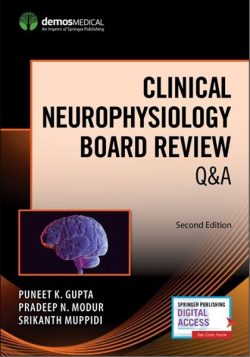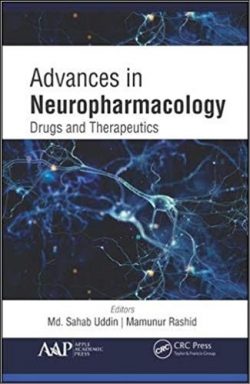The interest in ‘biomarkers’ seen across a spectrum of biomedical disciplines reflects the rise of molecular biology and genetics. A host of ‘omics’ disciplines in addition to genomics, marked by multidimensional data and complex analyses, and enabled by bioinformatics, have pushed the trajectory of biomarker development even further. They have also made more tractable the complex mappings of genotypes to phenotypes – genome-to-phenome mapping – to which the concept of a biomarker is central.
Genomic investigations of the brain are beginning to reveal spectacular associations between genes and neural systems. Neural and cognitive phenomics are considered a necessary complement to genomics of the brain. Other major omics developments such as connectomics, the comprehensive mapping of neurons and neural networks, are heralding brain maps of unprecedented detail. Such developments are defining a new era of brain science. And in this new research environment, neural systems and cognitive operations are pressed for new kinds of definitions – that facilitate brain-behavioral alignment in an omics operating environment.
This volume explores the topic of markers framed around the constructs of cognitive and neural systems. ‘Neurophenotype’ is a term adopted to describe a neural or cognitive marker that can be scientifically described within an associative framework – and while the genome-to-phenome framework is the most recognized of these, epigenetics and non-gene-regulated neural dynamics also suggest other frameworks. In either case, the term neurophenotype defines operational constructs of brain-behavioral domains that serve the integration of these domains with neuroscientific and omics models of the brain. The topic is critically important to psychiatry and neuropsychology: Neurophenotypes offer a ‘format’ and a ‘language’ by which psychiatry and neuropsychology can be in step with the brain sciences. They also bring a new challenge to the clinical neurosciences in terms of construct validation and refinement.
Topics covered in the volume include:
- Brain and cognition in the omics era
- Phenomics, connectomics, and Research Domain Criteria
- Circuit-based neurophenotypes, and complications posed by non-gene regulated factors
- The legacy of the endophenotype concept – its utility and limitations
- Various potential neurophenotypes of relevance to clinical neuroscience, including Response
- Inhibition, Fear Conditioning and Extinction, Error Processing, Reward Dependence and Reward Deficiency, Face Perception, and Language Phenotypes
- Dynamic (electrophysiological) and computational neurophenotypes
- The challenge of a cultural shift for psychiatry and neuropsychology
The volume may be especially relevant to researchers and clinical practitioners in psychiatry and neuropsychology and to cognitive neuroscientists interested in the intersection of neuroscience with genomics, phenomics and other omics disciplines.
Cognitive and behavioral phenotypes are full of potential as aids to the accurate diagnosis of cognitive disorders. This review, pioneering in its depth and focus, maps an organizing structure for cognitive phenotypes before analyzing notable varieties.
This expansive text applies the latest knowledge of neural and cognitive biomarkers to the contemporary bioinformatics and “omics” landscape, and to neuropsychology and psychiatric research and practice. Focusing on neurophenotypes and endophenotypes, it updates concepts of neurocognitive and behavioral functioning, normal and disordered processes and structures, and their myriad relationships within the larger context of the nervous system. Specialized chapters delve into neural and cognitive gray areas that may be classified as neurophenotypes or cognitive endophenotypes, including face perception, reward deprivation, EEG data, and fear conditioning. These advances signal a new accuracy in neuroscience, from a more precise fit between data, tools, and models to more effective diagnosis, treatment, and policy.
Among the topics covered:
- Brain and cognition in the “omics” era
- Appraising circuit-centered neurophenotypes
- Cognitive phenotypes and endophenotypes: concepts and criteria
- The strategy and utility of the endophenotype approach to neurobehavioral function
- Neural markers of errors as endophenotypes in neuropsychiatric disorders
- Implications for neuropsychology and psychiatry
Neurophenotypes and endophenotypes are critical discoveries in a developing field, and the analysis in Phenotypes spotlights their utility to neuropsychologists, neurologists, psychiatrists, and cognitive neuroscientists. This clarion work prepares research and clinical professionals for the world of technology- and science-based paradigms to come.
Susan Santangelo, Sc.D. is associate professor at the Harvard Medical School (Psychiatry) and the Harvard School of Pulbic Health (Epidemiology), where she has been a faculty member since 1994. She is Director of Statistical Genetics and Genetic Epidemiology in the Psychiatric and Neurodevelopmental Gentics Unit within the Center for Human Genetic Research at Massachusetts General Hospital. Her work is focused on the gene finding and phenotype delineation for a number of psychiatric disorders, particularly autism and schizophrena. As a nationally and internationally recognized expoert on the genetics of autism, Dr. Santangelo has served as an ad hoc member of the Scienctific Advisory Board for the National Alliance for Autism Research (NAAR) since 1999 and continues in that role for Autism Speaks since its merger with NAAR. She serves on the steering committee of the Autism Consortium and on the editorial boards of Molecular Autism (BMC) and the American Journal of Medical Genetics Part B Neuropsychiatric Genetics. She was the recipient of a Career Development Award from the NIMH. Vinoth Jagaroo, Ph.D. is associate professor in the Department of Communication Sciences and Disorders at Emerson College and in the Department of Psychiatry and the Behavioral Neuroscience Program at Boston University School of Medicine. Dr. Jagaroo is a member of the Cognitive Neuroscience Society, the International Neuropsychological Society, the Society for Neuroscience, and the American Neuropsychiatric Association. He is the founding member of the Society for Neuroinformatics in Neuropsychology.
Critically appraises clinical neuroscience research at the intersection of genomics, phenomics, and other ‘omics’ disciplines.
Explores neurophenotypes as operational constructs of brain-behavioral domains that facilitate brain-behavioral alignment in genome-to-phenome mapping and systems neuroscience.
Topics include brain and cognition in the omics era; phenomics, connectomics, and Research Domain Criteria; circuit-based neurophenotypes; legacy of the endophenotype concept; and discussions of various potential neurophenotypes of relevance to clinical neuroscience; and much more.





